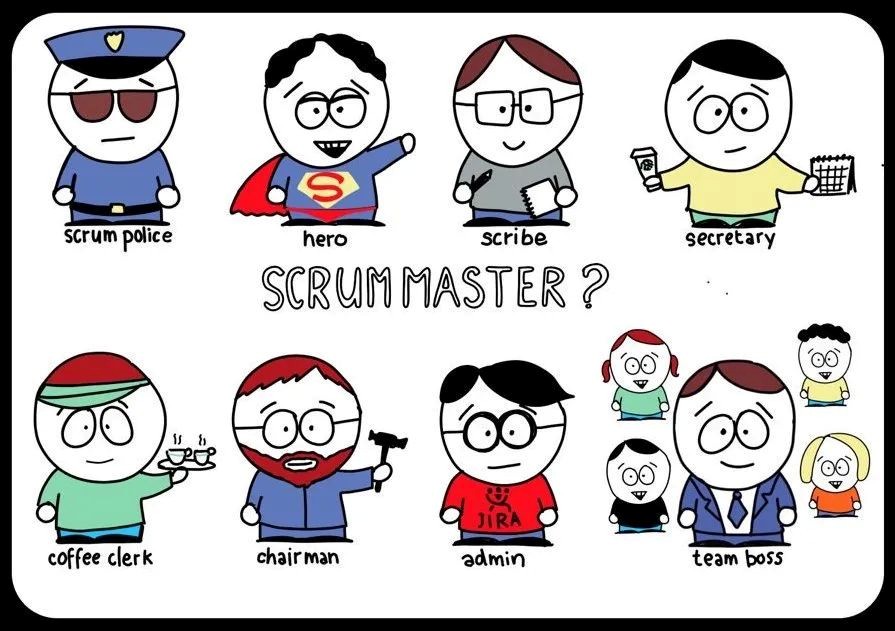The Growing Importance of Scrum Masters: Career Path and Best Practices
Introduction
As more organizations embrace Scrum Enterprise practices, the Scrum Master role is gaining widespread recognition. Scrum Masters serve as coaches and servant-leaders within Agile teams, making them indispensable for successful Agile transformations. Riding the global wave of digital and Agile adoption, Scrum Master has become a highly sought-after career, attracting considerable interest from leading enterprises worldwide.

With over three million certified Agile professionals globally—far exceeding PMP certification numbers—Scrum Masters and Agile Coaches are in exceptionally high demand. Major job portals consistently list tens of thousands of highly-paid Scrum Master positions, and active recruiting can even be found through personal and social networks. As a result, Scrum Masters’ average salaries have notably surpassed those of traditional project managers, reflecting the value organizations place on this role.
Given this growing recognition, it’s natural for aspiring Scrum Masters—or those already in the role—to consider their career development pathways. Based on extensive experience providing Agile training, consulting, and coaching, and in-depth analysis from leading Agile institutions, companies, experts, and industry reports, this article provides practical guidance for aspiring and current Scrum Masters.
How to Become a Scrum Master
The Scrum Master role is relatively new, similar to the earliest surgeons who started their careers without formal anatomical training. These early surgeons relied primarily on strong hands and sharp instruments, often practicing surgery in their spare time. Today’s professional surgeons undergo rigorous training, formal education, and extensive practice. Similarly, organizations selecting their first Scrum Master typically focus less on specific Agile expertise and more on proven leadership and management capabilities. Additionally, excellent Scrum Masters exhibit qualities such as responsibility, accountability, humility, commitment, broad knowledge, and strong influencing skills.
Regardless of your industry or previous career, becoming a qualified Scrum Master is achievable with dedicated study, practice, and experience. To get started quickly, consider these approaches:
- Online resources:
Access comprehensive online materials through sites like ScrumAlliance.org, Scrum.org, or AgileAlliance.org. For non-English speakers, local Agile communities, such as Scrum中文网, offer extensive knowledge bases. English speakers can benefit from international experts’ blogs, including those by Mike Cohn or Roman Pichler. Thoroughly studying and internalizing the Scrum Guide is essential.
- Agile community events:
Attend community-organized events such as Agile Tours, Scrum Gatherings, SAFe Days, or local Agile meetups. These provide opportunities to network, learn practical techniques, and gain insights from experienced Agile practitioners.
- Relevant Agile literature:
Read foundational books such as “Essential Scrum,” “Scrum: The Art of Doing Twice the Work in Half the Time,” and “User Stories Applied” to deepen your understanding.
- Professional Scrum training:
Participate in certified training courses like Certified Scrum Master (CSM), Professional Scrum Master (PSM), or SAFe Scrum Master to accelerate systematic learning.
To truly master Scrum, practical experience is essential. If your team is not yet Agile, start by introducing small Agile practices or influencing organizational leadership to adopt broader Agile initiatives. Companies with sufficient budgets might consider hiring external Agile consultants or coaches; participating actively in these engagements will greatly accelerate your learning. Additionally, advanced certifications such as Advanced Scrum Master (A-CSM), Certified Scrum Professional (CSP), Leading SAFe, and SAFe Program Consultant (SPC) can further enhance your skills and capabilities. Becoming a proficient Scrum Master is a rewarding journey, requiring patience, continuous learning, and self-improvement.
Career Development and Growth for Scrum Masters
Leading Agile institutions like Scrum.org, Scrum Alliance, and Scaled Agile Framework (SAFe) offer structured career paths and certification frameworks that support Scrum Masters’ professional growth. Organizations adopting Scrum Enterprise Model (SEM) depend heavily on skilled Scrum Masters, making this an excellent environment for career progression.

Scrum Masters can strategically plan their career growth within this Agile framework, leveraging professional certifications and practical experiences. Popular career progression options include:
- Advanced certifications: Obtain higher-level certifications such as Advanced Certified Scrum Master (A-CSM), Certified Scrum Professional (CSP), or SAFe Program Consultant (SPC).
- Specializing as an Agile Coach: Develop coaching expertise to mentor teams and guide enterprise-wide Agile transformations.
- Enterprise Agile leadership roles: Move into senior roles responsible for scaling Agile practices across multiple teams or entire organizations.
Conclusion
To implement SEM successfully, becoming a highly effective Scrum Master involves continuous learning, practical experience, and a genuine commitment to Agile principles. As Agile methodologies continue to transform global business practices, the Scrum Master role will only grow in demand and prestige.
Stay engaged, keep learning, and embrace opportunities for growth. The journey may be challenging, but it promises a fulfilling and impactful career.